Lumber run!
Go on a lumber run with Matt Kenney and he'll show you how he reads a stack of lumber to help him find the perfect boardWalking into a lumberyard full of towering stacks of wood can be intimidating. You want to take your time to find the right board, but you can feel the forklift operator’s patience running thin as you start digging your way to the bottom of a perfectly stacked pile of lumber. But armed with the right information you can make a pretty good educated decision as to which boards are worth digging for and which to leave at the bottom of the pile. In this video we’ll go on a lumber run with Matt Kenney and he’ll show you how he reads a stack of lumber to help him find the perfect board.

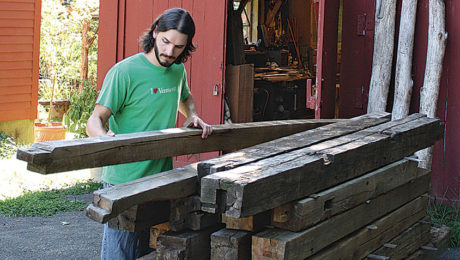
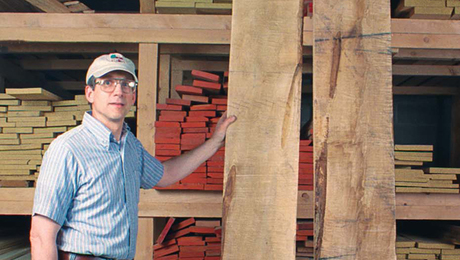
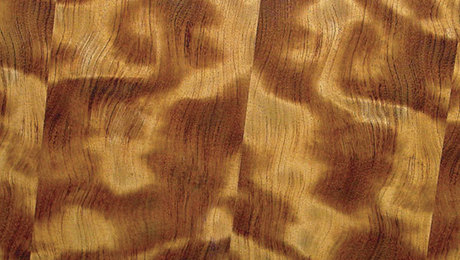



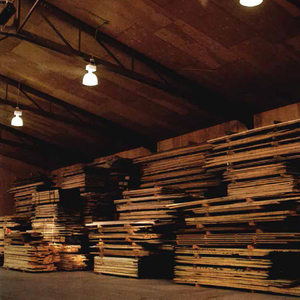
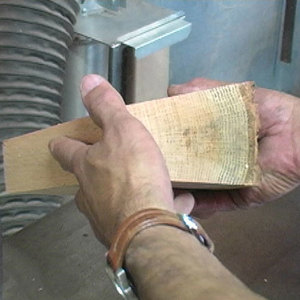
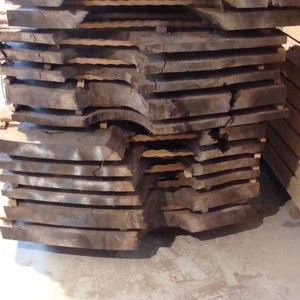
















Comments
Great idea for a video. Didn't quite get what he was saying about the edge grain changing direction in a few places on those rough maple boards, can anyone elaborate?
You seem to want to reach a novice audience while using some terms I never heard. Plus, like the other poster, I couldn't understand what you meant at the end with "figured" boards. If you really care to teach us you have to rethink your wording. Lastly, explain why this or that grain is important. It came out very elitist and superficial.
Just an exercise for you to easily find curly boards. I buy my lumber at a hardwood suppler, But when ever I have to go into a big box store, I head to the vertically stacked maple and oak.
Just a quick look at the edges and you can see the difference in the grain. l look at 50 boards in five minutes or less. If you see that edge, You can then decide to move the others out of the way and see the entire board.
I have on occasion bought a few boards just because they were that nice. Curly maple and two curly, tiger stripe, ropy oak (the most unusual oak I have ever seen)
I didn't need these boards, I have some nice wood already, but rarely, they are so exceptional, you can't leave without them.
good hunting !
A few words on stack etiquette would be a good followup video. For example: if you're lucky enough to encounter sequenced boards in a stack, be sure to leave them in sequence when you're done. Also, leaving the stack in a big-box jumble is not going to get you treated like a valued customer.
How could you resist not buying the whole stack. They all looked clean and flat and well seasoned without splits. I am not so fussy. I am sure I would find a use for all of them. I didn't understand some of the terms he used, but in England we talk about quarter sawn and slab sawn .
Good video. I'm not sure why one comment saw it as "elitist and superficial". I also don't necessarily see this as a video intended for just a novice audience. There are plenty of long-time hobbyist woodworkers who don't necessarily think about grain direction to the extent we should.
"Figured" wood occurs (at least in part) when the grain direction changes, sometimes creating spectacular patterns/designs. Matt Kenney doesn't like it for the kind of woodworking he does, but many of the rest of us love it. It's subjective. He most likely chooses non-figured wood because it's more uniform in appearance and the straight grain will give you more predictable wood movement.
Thanks, user-1131300. I do like figure too. I guess my takeaway here is to pay closer attention to side grain. Stock is not as nicely displayed at my local lumber yard.. you can only access the stacks at one end, lighting is bad, etc.. more often than not I'm hauling out boards one at a time anyway.
More tips on judging rough lumber would be welcome. I guess this comes w/ experience but I'm never sure how much it matters if a board has spotting, discoloration, stains, etc. Hard to know if there's beauty under the surface or if it was passed over by everyone else for a good reason. Or hey maybe I'm realizing my local store is just not that great, haha ; )
video did not play!
It would be helpful if Matt explained "riff sawn" vs "flat sawn", since a lot of his choices were based on the distinction. Clearly the board only went through the saw once, so how did it get two different saw effects?
I frequently get the terms "rift sawn" and "quartersawn" confused, so I look them up. One place to start is Wikipedia https://en.wikipedia.org/wiki/Rift_sawing
You can also search in the article archives of Finewoodworking,com
"Learning is not a receptive process; it is a creative process!"
Hey guys,
Sorry for not responding sooner. The best way to think about the difference between rift-, quarter-, and flatsawn is in terms of end grain. On a flatsawn board, the grain lays very flat, and often it looks like arcs. On the face, you end up with cathedrals. Riftsawn boards have grain that runs around 45 degrees on the end grain and has straight grain on the face and edges. The end grain of a quartersawn board is perfectly vertical, running in a straight line from face to face. These different cuts are created by the sawyer, depending on from where and how the board was cut from the tree.
I usually don't buy lumber that has been pre-planed. If the board has a cup, twist, or bow, you will lose around 1/4" of thickness when jointing it. I also look at defects such as knots. If they are on the edge or near the ends of the board they can be cut out without losing much material. If they are in the middle of the board and I am making a large project forget about it.
The casual use of the terms "rift sawn," "flat sawn," and "quarter sawn," and the incredible range of misinformation about them make this little clip rather a poor turnout if you're trying to educate yourself.
First, it would be helpful if Kenney didn't refer to one board is being part rift sawn and part flat sawn. The board was flat sawn (the whole pallet he was selecting was probably flat sawn, in fact). Because of where it came in the sawing sequence, it has some straight grain with the desired 45 degree or so angle to the face that Kenny favors and some very flat grain.
But what really interests me is the rift sawn vs quarter sawn conversation. If you look up rift sawn, it means that the boards are cut as closely as possible to being true radii of the log. Here's a good image: https://www.advantagelumber.com/images/sawn-lumber/xrift-sawn.jpg.pagespeed.ic.EEYfTnTxtb.webp. Now, if rift sawn lumber were really cut that way, you'd expect not 45 degree edge grain angles, but something very close to 90 degrees. You'd probably also expect a lot of ray fleck in a species like Oak.
Traditional quarter sawn boards, on the other hand approximated radii, but were with the exception of the widest cuts, not true radii. They were cut by quartering a log, then standing it vertically through the longest radius, and sawing vertical boards from that. Like this: https://www.advantagelumber.com/images/sawn-lumber/xquarter-sawn.jpg.pagespeed.ic.IhaeKPA3j8.webp. Clearly, if you do that, you get a mix of boards with 90 degree edge angle, all the way down to some with 45 degree edge angle or so - what Kenny calls rift sawn. You'd expect some boards to show big ray fleck, some not so much.
But it gets more complicated. Because modern sawyers often don't actually quarter saw like that. They quarter the log, then flat saw alternate faces of the resulting 90 degree wedge. Like this: http://alleghenymountainhardwoodflooring.com/wp-content/uploads/2012/08/QuarterSawnLogDiagram.png. The result is again a mix of quarter sawn-like boards with some rift sawn-like boards.
I don't really know what to think - other than that Kenney added to a subject that already is hopelessly confused.
lowabeauty,
Your explanations of rift- and quartersawn are incorrect. You've switched them. Quartersawn lumber has grain that runs 90 degrees to the face of the board. Riftsawn lumber has grain that runs in the neighborhood of 45 degrees to the face. Also, there is absolutely nothing wrong with saying that a section of a flatsawn board has riftsawn grain. It might be a colloquial description, but it's perfectly acceptable.
Could we please stop this non-sense? It is time to fire the philosopher and get back to Fine Woodworking. This man clearly has no idea about what he is talking about! Philosophers never do! The personal insults and poor comedy on the podcast and his 52 boxes articles has gone way to far. Could we get back to what was once a truly great web site - professional - qualified - experienced woodworking? Not some 'I think I am, therefore, I think I am, a misguided hobby woodworker, because I think I am, I think" nonsense! Please! Preaching error and confusion is really ridiculous! That doesn't help anyone! We don't need wrong misguided opinions from some 'feels good' philosopher! We need accurate and qualified information. Not wrong misguided opinions!
Hi Michael,
Thanks for listening to the podcast.
Matt
I can't remember when I ever got the perfect board. Some craft people need that type of wood. I've found out over all the years that I have made things out of wood. It takes a special person to make honey out of crap. And, boy do I like working with the flaws. To me they bring character to a project. Anyone & I mean anyone can work with perfect or near perfect wood. Let me hear from a person who loves working with junk & I'll show you a real craftperson!
I have to say that 'working with junk' does not make a 'real craftperson'. Working with junk or near perfect wood is only about the aesthetics of the finished product and the end result you intend to achieve. The quality of the wood you work with does not determine your skill level. The end result does.
My lumber yard doesn't have boards that are planned so nice in the stack. The end may be color coded for thickness. Very seldom would I find boards so easy to see in their rough sawn state. Nice try.
This is a great method for sorting boards and finding gems. Like another poster said, it's a great way to find gems at box stores. Just today I found 2 nice boards of bird's eye maple.
Matt,
I think that if you read my post carefully, you'll understand that I was making a point about how confusing information about this is. Can you explain why, if rift sawing is done the way most diagrams show, with every board being essentially a true radius of the log, it has 45 degree grain? I've sawn a lot of logs myself, and I can guarantee you that if you saw a log the way rift sawing is described nearly everywhere, you'll get grain that you describe as quarter sawn, and that if you saw the log the way quarter sawing is described, you'll get a mix of grain angles ranging from 90 down to 45 degrees or even slightly shallower.
My point wasn't that you're wrong, it was that the nomenclature and available descriptions simply don't make sense.
As for "absolutely nothing wrong with ..." - of course, say what you want. But, two things: one, saying a board has riftsawn grain is different than saying it is rift sawn. Second, if you actually saw lumber, then quarter sawn does mean something about the way you handle the log and it's different than saying it is riftsawn. When I quarter saw a log, I get a different pile of lumber than if I rift saw or plain saw the log. So, sure this is all a bit pedantic in one sense, but if you care about the skills that go into the entire process, then using language carefully helps show that care.
m kenney go away. we want to hear from professionals
This video wasn't supposed to change your life. I found it informative. If you don't understand the some of the terms being used my Matt, maybe look them up... you are on the internet. So bizarre that people got as worked up as they did over this video. I found it informative, and have no hate to spew at Matt. It was a good view.
I don't understand why people are getting all worked up over nothing. This is basic stuff: end grain at around 90 is quarter, around 45 is riff, less than around 45 is flat sawn. Not brain surgery folks. Hang in there, Matt
+1 on comments by "monastefurniture" and "bedrocked". I get the feeling that a couple of you- in addition to trolling FineWoodworking- are also providing valuable pre-election insight on Facebook. Don't overthink this.
Thanks for re-posting. My local lumber yard isn't so accommodating. Between lack of etiquette by customers and concern over liability, an employee has to accompany customers. I also noticed that my boards seem a lot flatter at the yard, twist or warp by time I look at them again in my shop :)
Man, I miss Matt Kenney.
Why'd y'all have to run him out of Dodge…?
I’ve not come across the term riff sawn before, but the comments have enlightened me. I’ve alway thought end grain at an angle was almost quarter sawn. There can’t be many places where the log is actually quarter sawn as it is much simpler with modern machines to saw through and through, with the tree sawn into slabs, with the middle ending up as the most stable with parallel grain. So when viewing timber we call some planks quarter sawn when they were slabbed, and some planks slab sawn when they were from the top or bottom of the pile. Somewhere in between is now termed riff sawn.
The video was clearly and eloquently presented. I don’t mind being educated to an unfamiliar term.
I usually find a use for the different types. If stability is overriding I go for the middle of the tree plank and slice it up the centre.
Matt - do you always buy surfaced stock in lieu of rough sawn? If perusing rough sawn stock, how then do you approach the selection process? Recently I needed 80+ board feet of 6/4 rough sawn prime walnut. The 6/4 size was important as I wanted to get a finished thickness of 1-1/2" and not waste money and material buying 8/4 stock. With 6/4 rough sawn running about 1-5/8" thick, I needed the straightest material in the pile. The stack had painted ends obscuring the grain, and with the surface rough on all edges and faces, seeing what lay beneath was problematic. I was able to determine from the end of the pile which were the widest boards (which is what I was after), and of course, they were buried deep down. In this case I had to deconstruct the entire pile to pick out the best of the bunch. Sometimes you have to go through the entire stack to get what you need, as it is not possible to see from the ends of the boards what will work for you.
Log in or create an account to post a comment.
Sign up Log in